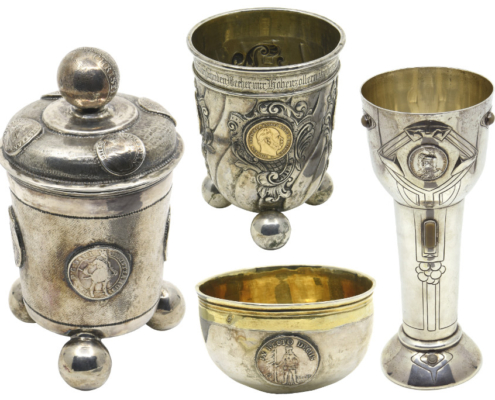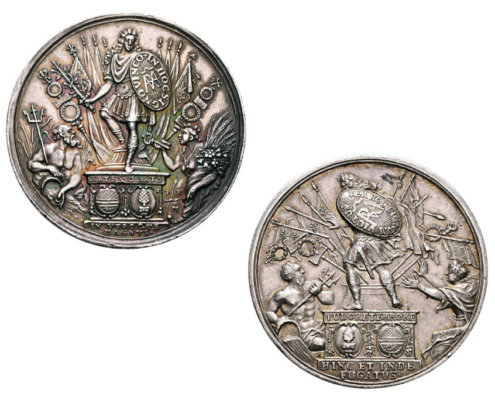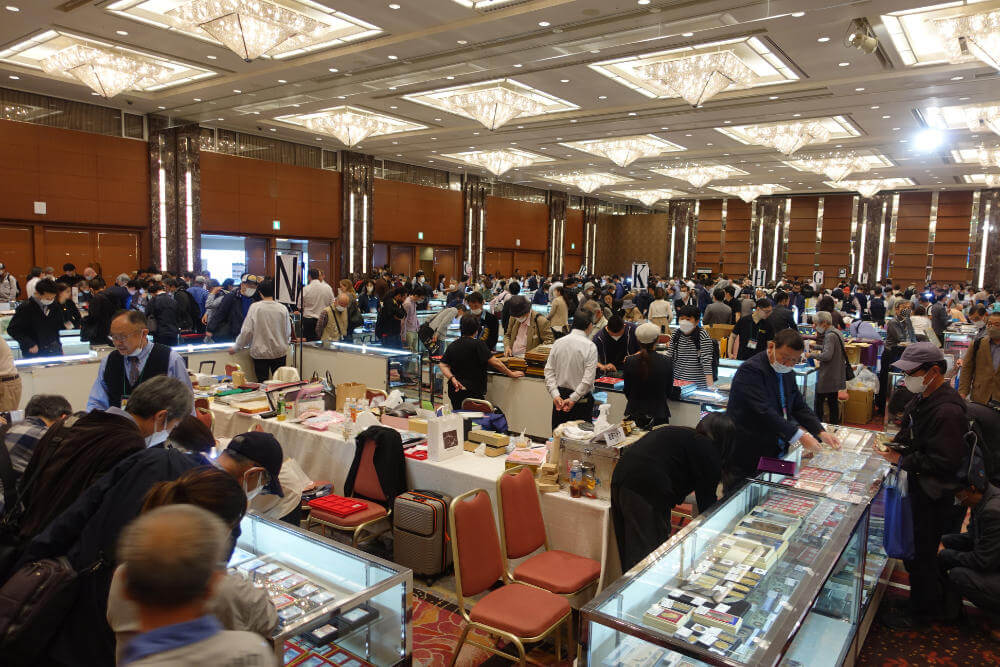Friedrich Wilhelm, the Great Elector.
Ducat 1686 LCS, Berlin.
Extremely rare.
Attractive piece.


Maximilian II.
Ducat 1855.
Only a few pieces are known.
Extremely fine-uncirculated.

Ferdinand Albrecht I.
Löser in the weight of 4 Reichstalers 1670, Clausthal.
Extremely rare.
Attractive piece.

Friedrich Adolf.
5 Ducats 1711, Detmold.
Only known piece.
Extremely fine-uncirculated.

6 Ducats, n. d. (1765-1790), with the title of Joseph II.
NGC MS 62 PL.
Extremely rare.
Attractive piece from polished dies.
Almost uncirculaed.

Johann Adolf, 1590-1616.
Portugalöser (10 ducats) n.d., Eutin.
Extremely rare and of particular
significance in monetary history.
Attractive piece.

Leopold I, 1657-1705.
20 Ducats, n. d. (after 1666), Hall,
by M. König.
Extremely rare.
Almost extremely fine.

Archive: People and Markets
CIT’s Iron Maiden – Piece of Mind
Again CIT pays tribute to the British heavy metal band Iron Maiden. In 2023, CIT’s coin is dedicated to the band’s fourth studio album “Piece of Mind”.
TICC: The Best Organised Coin Show in the World
Sometimes it takes a look outside the box to get some inspiration for how the coin show of the future might look like. The TICC in Japan certainly has some fresh ideas to offer. Ursula Kampmann reports on what she experienced in Tokyo.
Archive: Coins, Medals and more

Coin-Embedded Tableware as Part of European Dining Culture
In European castles and treasure chambers, we often come across magnificent coin-embedded vessels. These items represent wealth and knowledge. Although their roots can be traced back to the Renaissance, it was not until the bourgeoisie of the 19th century that they came into their own.

Between Triumph and Tragedy – Maximilian II Emanuel, “The Prince of Bankrupts”
Maximilian II Emanuel of Bavaria, known as gifted general, an avid builder, and a passionate collector of art, led a turbulent life. Medals offered in Auction 18 of Leu Numismatik AG reflect both the heights and humiliations of Maximilian’s military campaigns in southern Germany.













Foreign Coin Production Ends at the Royal Mint – The End of an Era or Another Step Closer to a Cashless Economy?
The Royal Mint has announced that it will no longer produce coins for other countries, ending a business model that it has operated for 700 years. Michael Alexander puts this development into perspective.
CDN Publishing Acquires Whitman Publishing
CDN Publishing, the numismatic data and pricing specialist and well-known publisher of the Monthly Greysheet, has acquired Whitman Publishing, the major US numismatic publisher.